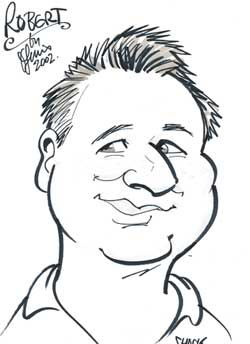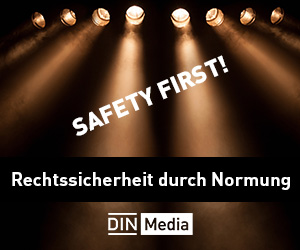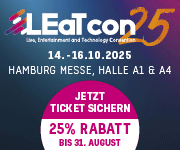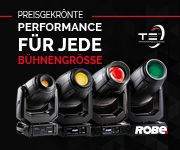profiles - a light-hearted look at industry personalities
No. 75 in a continuing series

Caricatures by

Robert Bell
Head of Shock Lighting Ltd.
Robert wasn't born with any real artistic talent. He can't dance, can't sing, but has always wanted to be around those who did. And from very early days he liked buttons and knobs. Looking out of the living room window at the age of three, he thought he'd like to be a garbage truck driver because they had levers to pull to make the thing go crunch. By the age of six he discovered the hi-fi and by elementary school he was DJing dances. Robert questioned why his fellow eleven-year-olds didn't find The Rocky Horror Picture Show soundtrack as danceable as he did.
Robert's first company, a professional DJ outfit, was started in 1980, and he hand-built the sound system and light show. The lighting rig consisted of a battery powered police beacon, a light organ, a Heath-kit Xenon strobe and ‘chaser lights' controlled by a hot lead and naked commutator upon which he would swipe back and forth (amazingly, he never electrocuted himself). He wondered why 14-year-olds weren't dancing to The Clash.
During high school, he began to hang about on the local band circuit and started to produce bare-bones recordings and was sought after by every garage band in Guelph, Ontario, Canada. Joining the university campus radio station whilst still in high school, he hosted a late-night radio programme but found himself more at home in the production studio where he edited interviews and produced commercials. This was all before the compact disk and digital FX. The tools of the day were reel-to-reels, chinagraph markers, and razor blades.
During his last year of school at Carleton University in Ottawa, where he studied economics, Robert got a job at the theatre where he stage-managed and lit the university company's productions. This is where he first started to write the software that the industry now knows as WYSIWYG.
After graduation, he was employed to install and service Strand dimming systems, but bending conduit only kept him amused for a short period before his father asked him to come and work at his engineering firm. Learning Fortran, he re-compiled most of the old code to run on desktops which were one one-hundredth the cost and ten times the speed of the old mainframes.
The lighting bug was now in his blood and he sought a job at the Canadian Broadcasting Corporation (CBC). He worked there for two years as a lighting assistant and for the last six months in the IT department developing software for lighting. When CBC announced they wanted to make TV rather than software, he left to pursue investors to develop WYSIWYG further. With help from Flying Pig Systems, CAST Lighting was born and Robert stayed on, lighting shows, and developing software until September 2000.
In late 2000, he formed Shock Lighting Limited, a lighting design and software consulting firm housed in the top of his barn on ten acres just north of Toronto. Apart from programming and lighting design, Shock's main contract is that of Product Management for Horizon Control and the development of the Marquee lighting control console for Entertainment Technology.
Check out Robert's book Let There Be Light, soon to be published by Entertainment Technology Press, where he interviews ten software pioneers in the entertainment lighting industry. They talk about their products, their companies, and their personal motivations. With all of Robert's experience with software development and his connections in the industry, this collection of conversations is a fascinating read for anybody working in lighting today. With all the products discussed, it is impossible to work in this industry and not be affected by one or more of the people interviewed in his book.
Look out for the next subject in our Profile series...
view other profiles
© 1999 - 2025 Entertainment Technology Press Limited News Stories







